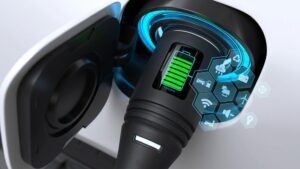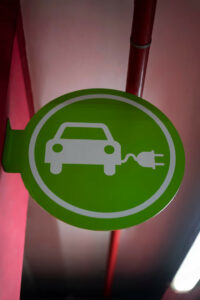The Future of Electric Cars: A Comprehensive Guide to Battery Technology

The Future of Battery Technology for Electric Cars
Electric Vehicles and Advanced Battery Technologies
Electric vehicles (EVs) utilize electric motors powered by rechargeable battery packs for propulsion, offering zero emissions and reduced environmental impact compared to internal combustion engine (ICE) vehicles. The battery technology employed in EVs is a critical aspect that influences range, power, and charging times. Electric vehicle battery packs comprise numerous lithium-ion cells arranged in series and parallel configurations, generating high-voltage outputs necessary for vehicle operation.
- Lithium-Ion Batteries: Current Challenges
Despite the substantial impact lithium-ion batteries have had on the EV industry, they exhibit several limitations:
1.1. Lifespan: Lithium-ion batteries typically have a charge cycle lifespan of 500-1000 cycles before experiencing capacity degradation, leading to battery pack replacements after several years.
1.2. Temperature Sensitivity: Extreme temperatures can damage lithium-ion batteries and shorten their lifespan, necessitating complex thermal management systems to maintain optimal operating temperatures.
1.3. Material Scarcity and Sustainability: Lithium-ion battery production requires materials such as cobalt, nickel, and lithium, which are limited in supply and primarily sourced from countries like China, Russia, and the Democratic Republic of Congo, raising concerns about sustainability and ethical mining practices.
- Emerging Battery Technologies
To address lithium-ion battery limitations, researchers are exploring alternative battery technologies:
2.1. Iron-Air Batteries: Iron-air batteries generate electricity by reacting with atmospheric oxygen using iron as the anode material instead of lithium. These batteries can be more affordable, environmentally friendly, and longer-lasting than lithium-ion batteries.
2.2. Solid-State Batteries: Employing solid electrolytes in place of liquid electrolytes found in lithium-ion batteries, solid-state batteries offer improved safety, energy density, and service life.
- Iron-Air Batteries: Potential and Challenges
Iron-air batteries demonstrate promising potential due to their abundant, low-cost materials and higher theoretical energy density than their lithium-ion counterparts. However, they face efficiency challenges, with approximately 60% efficiency compared to 95% for lithium-ion batteries, resulting in increased size and weight for equivalent energy capacity.
- Future Battery Technology Developments
Emerging battery technologies such as iron-air and solid-state batteries offer opportunities to overcome the limitations of lithium-ion batteries. Further advancements in fast-charging infrastructure and wireless charging technologies may also enhance the EV ownership experience.
- Environmental Implications
Battery technology has significant environmental ramifications. Lithium-ion battery production involves the extraction of minerals that can negatively impact ecosystems, and their disposal poses challenges due to toxic chemicals. However, alternative technologies such as iron-air and solid-state batteries may mitigate these issues by utilizing more abundant materials and providing longer service lives.
- Investment in Advanced Battery Technologies
Battery technology research and development investments are vital for expanding the EV industry. Supporting innovative companies like Tesla, Panasonic, and LG Chem can help drive advancements in battery technology and foster the growth of electric vehicle adoption.
In conclusion, advancements in battery technologies, such as iron-air and solid-state batteries, are poised to address the limitations of current lithium-ion batteries and propel the electric vehicle industry forward. Continued investment in battery research and development is crucial for realizing the full potential of electric vehicles and reducing their environmental impact.
